Wild Okinawa
The Islands of Okinawa are home to an incredible diversity of stunning wildlife species, many of them endemic to these unique islands. This is how I feel about them and how I immerse myself in their world to find out more about them to help better protect them.
If you have taken a peek at my YouTube Channel, you will find numerous adventures about my imaging exploits when seeking out specific wildlife critters. For me, the rolling green hills of the Yambaru are an enticing treasure trove that holds so many secrets about the diversity of species in Okinawa. That said, it is not just the main island of Okinawa that holds such natural history treasures. Predominantly unexplored, the dense and green rolling hills of the island of Iriomote beckon with just as much intensity to those adventurous souls looking for something totally off the beaten path. An extensive marine playground for numerous species, such as the majestic giant Manta Rays, Whalesharks, and the occasionally spotted Dugong as well as a credit list of more diminutive species way too extensive to list here.
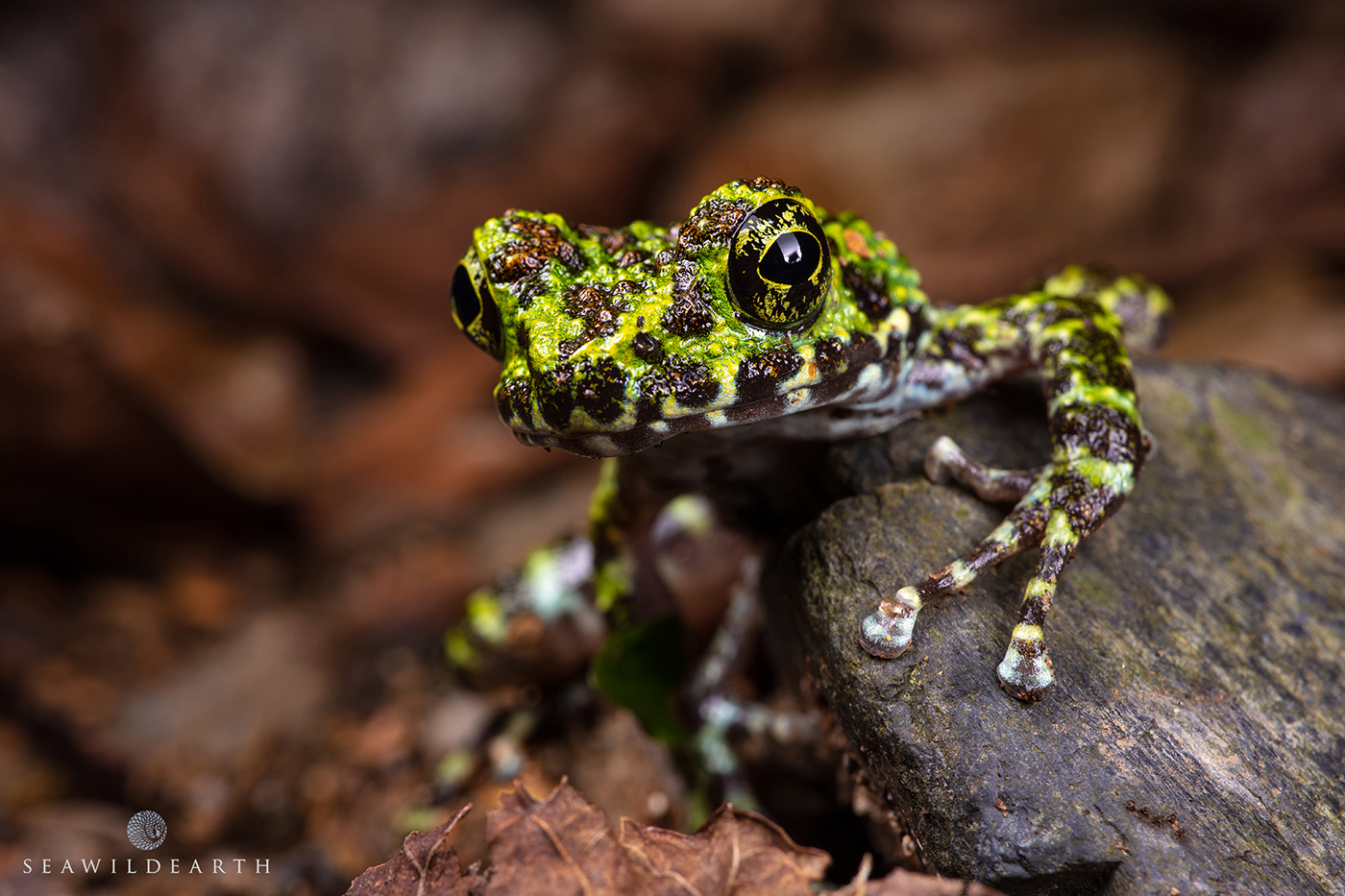
The stunning green morph of Ishikawa's Frog. Often described as Japan's most beautiful frog, it can only be found in small pockets of jungle in both Okinawa main island and neighboring Amami Oshima island.
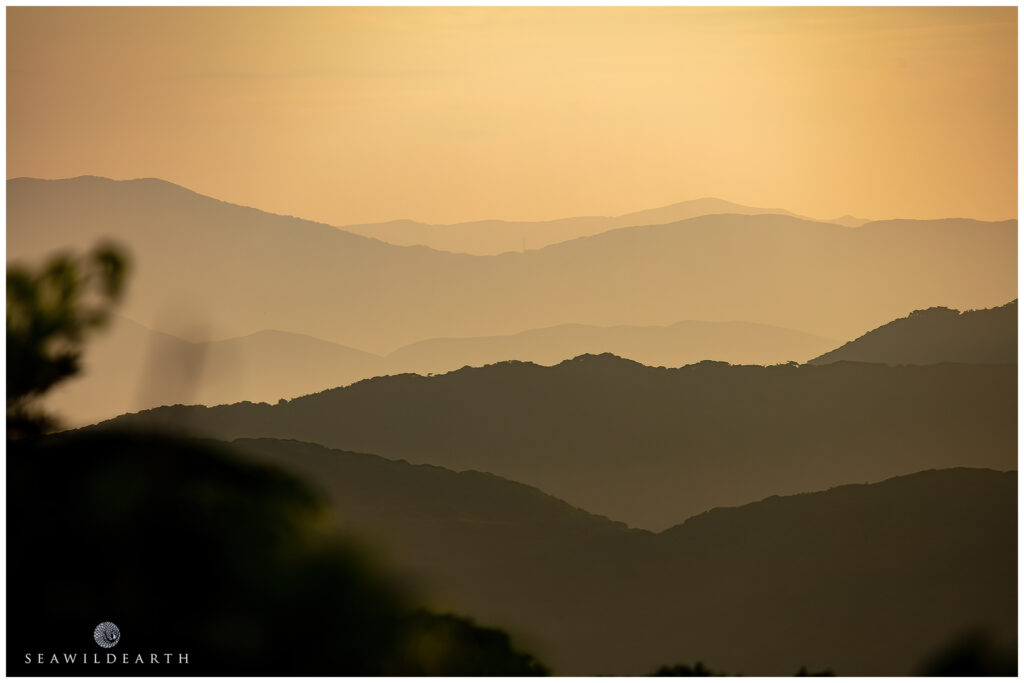
Hills of the Yambaru encased in an early morning glow.
Many of the species found within the predominantly jungled north on the main island of Okinawa tend to be endemic to those regions. There is a definite density shift between species prevalence between the northern and southern confines of the island. That said, a few locations in the south allow for incredible interactions with several iconic wildlife species on the island. That number, however, jumps exponentially when one travels through the portals of the Yambaru National Park. One of my favorite species to encounter is undoubtedly borne more from its aesthetic and photogenic appeal. Kuroiwas' Ground Gecko is a diminutive gecko species endemic to the island of Okinawa. Given its scarcity, currently listed as endangered, this species is sadly the focus of those looking to collect endangered species. Poaching is a real threat faced by this and numerous other species in Okinawa. Habitat destruction for development is also an issue facing the territory and range of this species. With equal scarcity is Ishikawa's Frog, often touted as Japan's most beautiful of all amphibians. Normally encountered in its green morph state the holy grail for any photographer is to happen on a specimen of the blue morph, the stuff of legends!
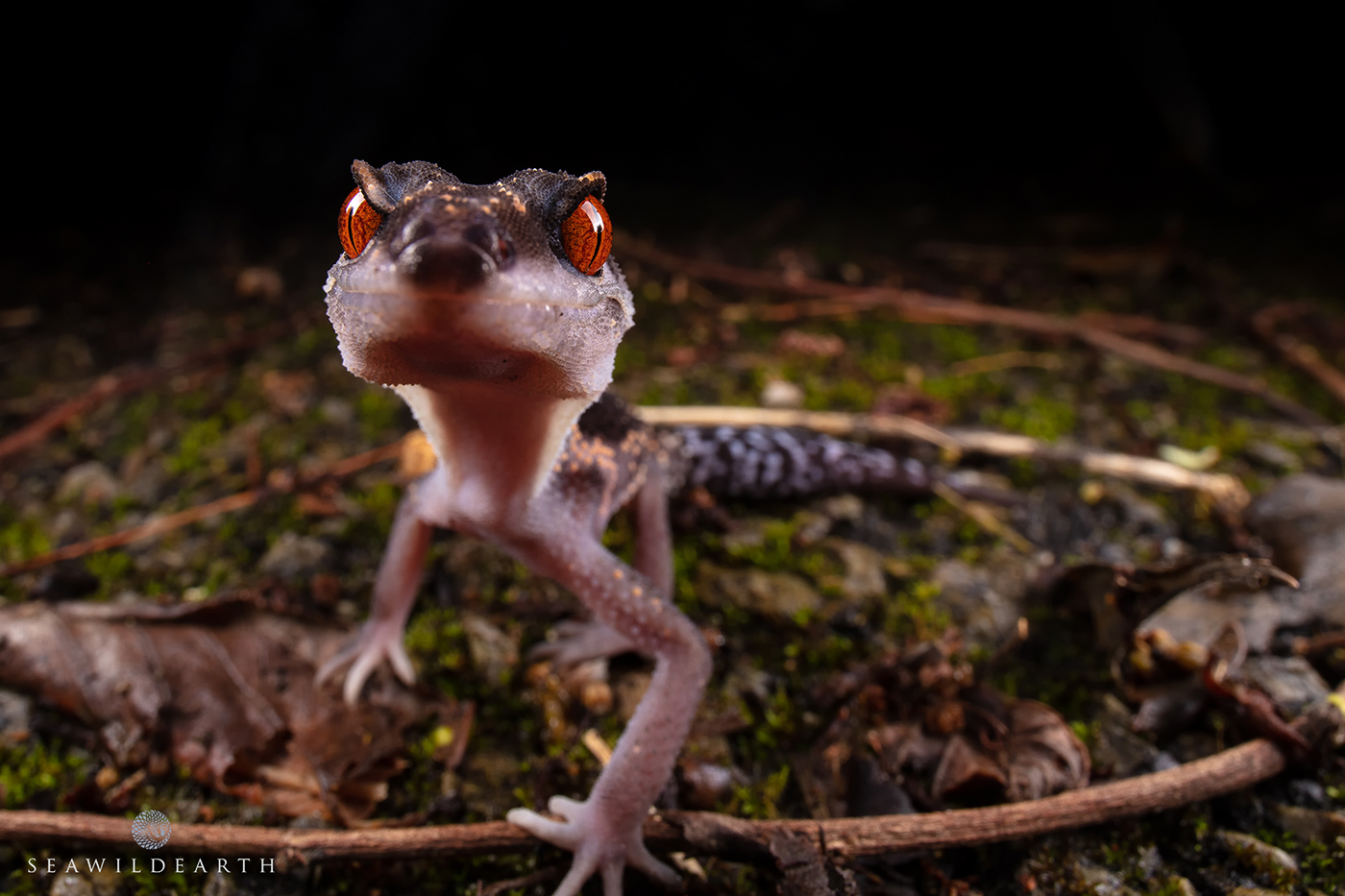
The diminutive Terminator looking glare of Kuroiwa's Ground Gecko
No editorial about the wilder side of life on Okinawa would be complete without a mention of the infamous Habu Pit Vipers. Throughout the main island of Okinawa, three main species of Habu or Pit Vipers reside. They can be very venomous and are distributed throughout all corners of the island, certain species are more prevalent in the South and others in the North. For the main part, the most often encountered of the Habu species is the Hime or 'Princess' Habu. Reaching a length of some 80cm, it can, at times, attain quite the girth. With a camouflage that blends perfectly with the small pebbles and stones of its preferred hunting environment of creek and riverbank, it is pretty common to step within inches of them and be totally oblivious to their presence.
On the other hand, or foot, is the Okinawa Habu. This less tolerant species can attain a length of up to nine feet, 3m, but is more common to encounter individuals measuring between 4ft and 6ft. As opposed to the incredible camouflage of its smaller relative, the Hime Habu, the Okinawa Habu tends to vary between a muted to vibrant variation of Yellow with black markings. Given this tends to be a species with a greater willingness to strike at those who venture too close, it has no real requirement for camouflage. Steer clear at all costs! This species is also targeted by those who make and sell the island drink known as 'Habu Sake'. Much like the worm that appears in some bottles of Tequila, there is a version of the Japanese moonshine known as Sake that is produced on the island but which, instead of a worm, has an Okinawa Habu submerged in the alcohol!
A third species of Habu is not endemic to the island but is more of an introduced species and one that is currently facing a nationally implemented eradication program. Given away by its name, the Taiwan Habu is a species that was probably introduced by being mixed into shipping freight of vegetables from Taiwan. This species if found predominantly in the more southern confines of the island, given it it widely thought to have entered the island via the busy ports around the southern city of Naha.
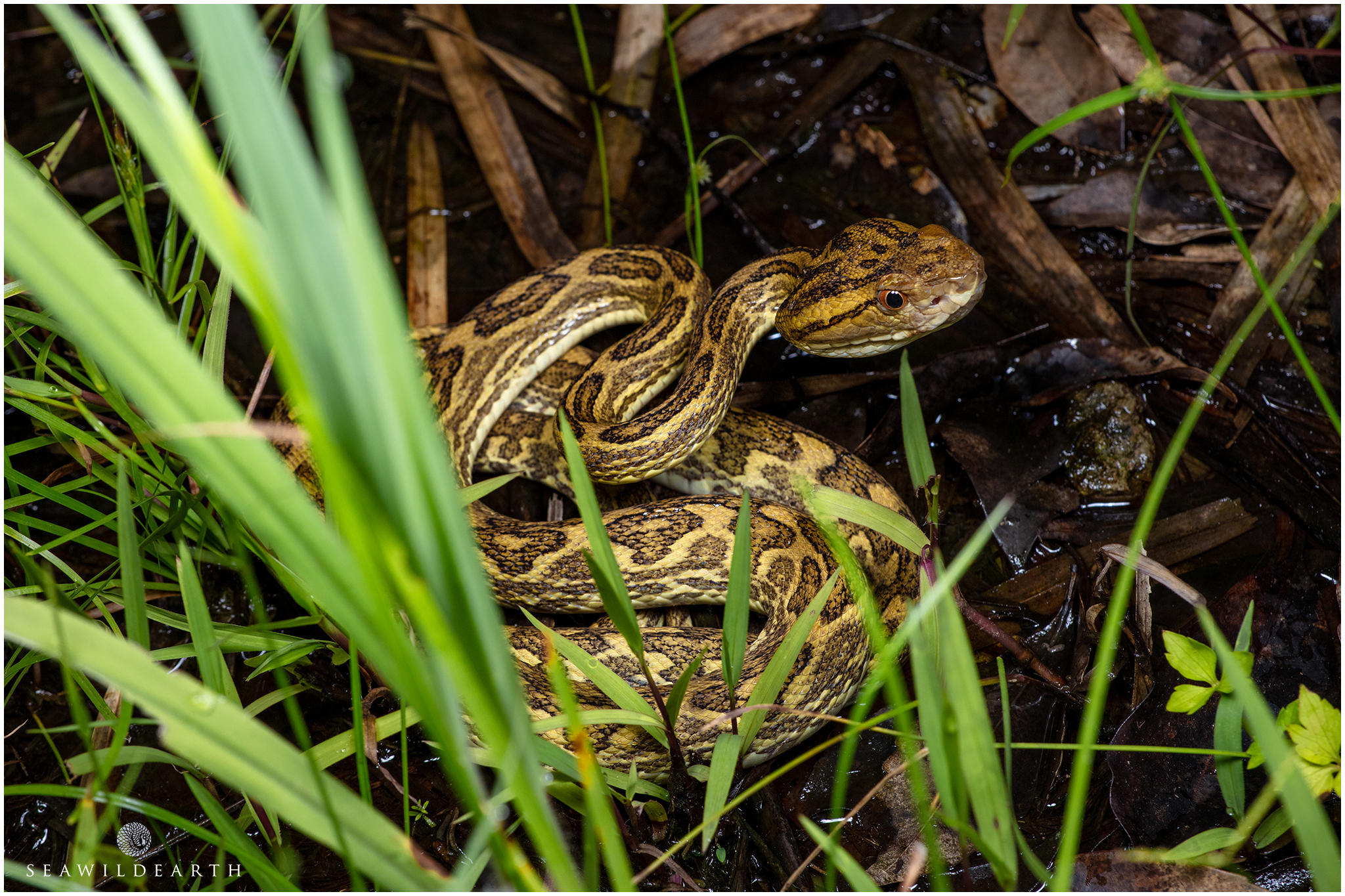
Clearly identifiable, the Okinawa Habu can be found in drainage ditches along farmland, in rivers and creeks, in jungles, and pretty much anywhere else where frogs may be prevalent. Watch out though, as they strike fast and without warning.
Beyond the ground-dwelling species, we turn our gaze to the skies. Bird watching in Okinawa is highly rewarding. Again, the presence of endemic species is a welcoming aspect for any avid ornithologist, whether based on or visiting the islands. From Buzzards to fishing birds of prey such as the seasonal Osprey to the smaller, and highly prized, Pryers Woodpecker. From flightless species such as the Okinawa Rail, known as the Yambaru Kuina on the island, to ornate flycatchers, wading, and shorebirds to winter visitors such as black-faced spoonbills. Okinawa has a varied and thoroughly mixed bag regarding avian diversity.
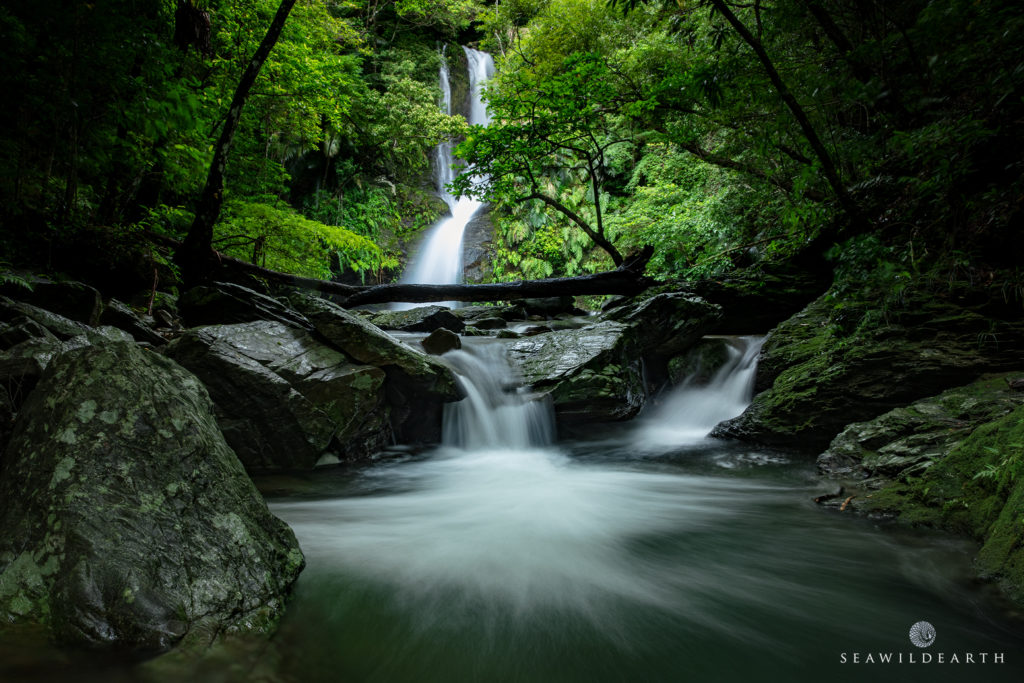
A typical scene under the green canopy of the Yambaru. Liquid veins keep the island green.
In all of my dealings with wildlife species on Okinawa, I never divulge locations given the potential for poaching. Most often are the times I don't publish my encounters with the more enigmatic species I happen across. Some species on Okinawa have never been filmed before, yet through a dogged determination, I have managed to film, species that have seldom been encountered that I have found myself surrounded by at times. It is all a matter of having an in-depth and highly respectful demeanor. I require that anyone I may lead into the jungle also abide by the habit of not divulging locations or subsequent geotagging any imagery from trips they may make into that green wonderland.
As with life, everything revolves around a cycle of life. Seasonal variations in temperatures etc, determine the prevalence of one species over another. For the species that form the lower rungs of the food cycle, everything depends on their ebb and flow in population. This is determined by seasons. Thus from Spring through November, I tend to favor imaging adventures that focus on the wilder side of life. Often finding myself deep in the green jungles of Okinawa, either solo or by introducing those with a true appreciation for wildlife to the awesome nature of the island. In all instances, I never share the geotags of locations and always request that those I take into the jungles to witness this beauty do the same and ensure all locations are removed from the image data before sharing on social media. I'm pretty sure poachers follow my imaging exploits online, and are possibly even reading this simultaneously as you!
An Incomplete Who's Who of Okinawa Wildlife
While below is a comprehensive overview of jungle fare, I have yet to attain photographic records of several species to a standard I would be happy enough to display. The hunt for interactions and their resulting imagery, continues.
"To cherish what remains of the Earth and to foster its renewal is our only legitimate hope of survival".
Wendell Berry - American Poet
About the Author
Internationally recognized as a provider of quality mixed media Mark Thorpe is always on the search for captivating content.

Photographer / Cameraman
Mark Thorpe
Emmy Award Winning wildlife cameraman and Internationally published landscape photographer Mark Thorpe has been an adventurer since he could walk! Spending 17yrs as an Underwater Cameraman at the start of his imaging career, the highlight of which was being contracted to work with National Geographic. In that role as a field producer and cameraman, he's been privy to a mixed bag of hair-raising adventures. For some reason, he was always selected for projects relating to large-toothed marine predators such as Great White and Tiger Sharks, Sperm Whales and Fur Seals. Additionally, he has also been active within Southern Africa on terrestrial projects dealing with a wide array of iconic wildlife.
Currently based in Okinawa, Japan, he's always looking for his next big adventure. He shares his exploits online with a totally organic social audience of over 180,000. Sponsored by several photographic industry manufacturers, he is constantly scouring the islands for captivating landscape and ocean scape compositions. In videography, he continues to create short photographic tutorial videos and content about the diversity of wildlife within Okinawa and the Ryukyu Islands of Southern Japan.
Whenever that rarest of commodities is available, spare time, Mark continues to photograph flora and fauna of Okinawa that will eventually be used to compile a Coffee Table Book project. 'Yambaru - The Green Beating Heart of Okinawa' is planned to showcase the diversity of wildlife species and landscapes that make up the incredible location known as the Yambaru, the rolling green jungles of Northern Okinawa. It is a work in progress, borne of a deep passion and respect for the wilder side of nature found throughout the islands of Okinawa. Watch this space!
































































